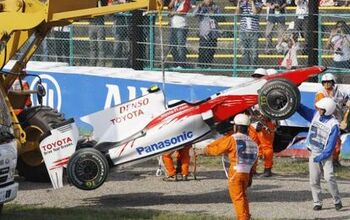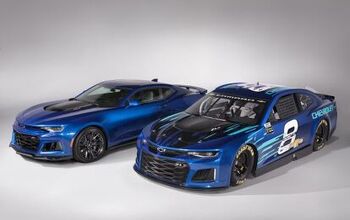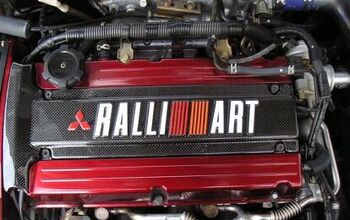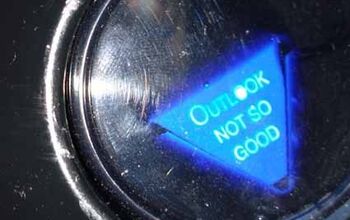Quote Of The Day: Win On Sunday, Sell On Monday Edition
New vehicle buyers who are influenced by motorsports typically love cars and trucks and they are opinion leaders for other car buyers – they give an average of 25 or more vehicle recommendations per year to others. More importantly people follow their advice – and we have measured it. So, there is a downstream impact from the races in the form of on-going word of mouth recommendations. That’s why we say that the roar from a race car continues away from the track.
Steve Bruyn, President of Foresight Research breaks down an intriguing finding from his firm’s “2010: Automotive Marketing Return On Investment” study [via PRNewswire]. What makes Foresight’s finding so strange is that from Formula One to NASCAR, OEMs have been grumbling about the irrelevance of major race series to their automotive products. Meanwhile, there’s no shortage of anecdotal evidence to suggest that automotive enthusiasm is on the decline in general, a reality which implies that racing is less important to automotive buying decisions than ever. So just how effective is the oldest form of automotive marketing?
Ironically, Foresight singles out the race series that have come under the greatest OEM pressure of late as examples of effective race-based auto marketing.
When it comes to the influence of various racing organizations, NASCAR, Formula 1 and IndyCar are heavy favorites. Geography also played a key role in the study with markets like Charlotte, Orlando/Daytona, Dallas and Northern California all more likely to attend a race and/or watch on TV. The incidence of TV viewership by brand was led by Dodge (36%), GMC (35%), Chevrolet (32%) and Ford (31%) followed by upscale and performance oriented brands. Buyers of large cars, sporty cars and pickup trucks are more likely to be influenced by motor sports.
OK, so those are the most popular racing series with American audiences… but what percentage of car buyers actually watch them?
In 2009, 10% of all new vehicle buyers surveyed attended one or more motorsports races in the 12 months prior to their purchase. Meanwhile, 25% of all new vehicle buyers surveyed watched at least one motorsports race on television in the same time period. Of those who watched motorsports on TV, the average number of races watched was a surprisingly high 11.
But Foresight only quantifies the real impact on the ten percent of car buyers who actually attend races. As Bruyn explains
When marketers have a display at a race, 63% of those highly influential buyers actually pre-planned their visits to include vehicle brand displays at the motorsports venue. These folks are there for the race but when they’re in the market for a new vehicle they take the opportunity to visit the display. There may not be a huge number of shoppers at any given race but there are definitely enough to make the race day pay off. Then after the race, they are far more inclined to spread vehicle recommendations versus the total market average (44% versus 18%, respectively).
Now, ten percent of the market isn’t something to be ignored, but with race fans statistically distributed in regional clusters, a market-wide commitment to motorsport still seems like a questionable move for mainstream brands. Perhaps then, the benefit of racing series like NASCAR is that it’s relatively cheap, and can be followed or ignored, depending on the consumer. On the other hand, if NASCAR’s vehicles only superficially resemble a brand’s road cars, one has to wonder how long the halo effect can last.
More by Edward Niedermeyer
Latest Car Reviews
Read moreLatest Product Reviews
Read moreRecent Comments
- El scotto UH, more parking and a building that was designed for CAT 5 cable at the new place?
- Ajla Maybe drag radials? 🤔
- FreedMike Apparently this car, which doesn't comply to U.S. regs, is in Nogales, Mexico. What could possibly go wrong with this transaction?
- El scotto Under NAFTA II or the USMCA basically the US and Canada do all the designing, planning, and high tech work and high skilled work. Mexico does all the medium-skilled work.Your favorite vehicle that has an Assembled in Mexico label may actually cross the border several times. High tech stuff is installed in the US, medium tech stuff gets done in Mexico, then the vehicle goes back across the border for more high tech stuff the back to Mexico for some nuts n bolts stuff.All of the vehicle manufacturers pass parts and vehicles between factories and countries. It's thought out, it's planned, it's coordinated and they all do it.Northern Mexico consists of a few big towns controlled by a few families. Those families already have deals with Texan and American companies that can truck their products back and forth over the border. The Chinese are the last to show up at the party. They're getting the worst land, the worst factories, and the worst employees. All the good stuff and people have been taken care of in the above paragraph.Lastly, the Chinese will have to make their parts in Mexico or the US or Canada. If not, they have to pay tariffs. High tariffs. It's all for one and one for all under the USMCA.Now evil El Scotto is thinking of the fusion of Chinese and Mexican cuisine and some darn good beer.
- FreedMike I care SO deeply!
































Comments
Join the conversation
Anyone else notice that engine failure disappeared in the IRL when Honda started supplying all the engines? I know the engines have almost no connection to Honda consumer products, but I think Honda uses the IRL to send the message that they know their stuff when it comes to engineering internal combustion engines. http://racing.honda.com/hpd/about.aspx
Ferrari, Lotus, Williams, BRM, McLaren, Benetton (a clothing manufacturer, fer chrissake), Brabham, etc. All are cottage-industry operations, and all have participated in F1. Large companies like Renault, BMW and Honda are rare in the annals of Formula 1 and even Ford only stuck its name on a Cosworth engine. Of those biggies I mentioned, only Renault and briefly Honda ever fielded a complete car and not just an engine. However, technologies developed in F1 do trickle down to production cars, maybe more so than in any other racing series. Credit improvements in aerodynamics, electronic engine management, , transmissions, driver aids like traction control and ABS, metallurgy, structural design, and many others to lessons learned in F1 over the last 30 years alone. The car in your driveway benefited more from F1 tech than it ever got from NASCAR. NASCAR, on the other hand, has always been really good at presenting its form of racing as FUN. The most common complaint about F1 these days is that it's too clinical. NASCAR, on the other hand, has always been big on personalities.